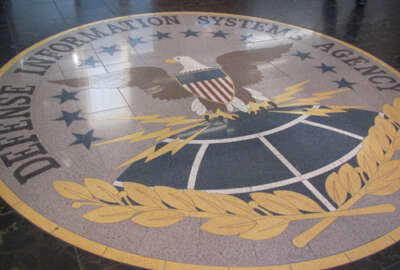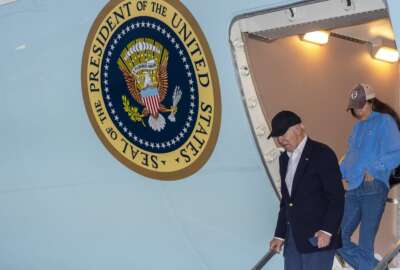DISA’s intel director laying the foundation for new J-2 shop
“My big thing in the last year has been how do I build the J-2? I need people, I need authorities, I need capability, I need funding,” said Col. Richard Lea...
The Defense Information Systems Agency’s new intelligence shop, though small in size, will be vital to the agency’s mission to secure and operate the Department of Defense Information Network.
Last year, DISA announced a sweeping reorganization effort to better align its operations with the Joint Staff and combatant commands the agency supports. Using the J-code system, DISA introduced a J-1 focused on manpower, a J-3,5,7 focused on operations and training, a J-8 in charge of requirements and funding and a J-2, DISA’s first-ever intelligence shop.
Lt. Gen. Robert Skinner, who serves as DISA’s director and the commander of DoDIN, recognized the pressing need for intelligence to better protect the agency’s assets and that the existing DoDIN J2 unit lacked resources and capacity to support DISA’s unique needs.
“When [DISA’s director] puts on his hat as DISA, he needs intelligence to be able to focus on his equities — the physical, the logical, the cognitive equities of what makes up DISA. Where DoDIN J2, they’re looking across 44 other [areas of operation]. They didn’t have the bandwidth, they didn’t have the resources to be able to dive deep into these equities like he believed he needed,” Army Col. Richard Leach, DISA’s intelligence director, told Federal News Network at the AFCEA TechNet Cyber conference in Baltimore last week.
“That’s the focus for me standing up the J-2 shop is to really focus on those DISA equities, ensure that our requirements for intelligence are integrated into the defense and industrial enterprise saying, “I need more intelligence on what malicious cyber actors are doing, but I need it written and I need the requirements developed from the perspective of what DISA does.”
Skinner made the decision to create a J-2 unit directly, so the agency has been reallocating resources, including manpower and funding, from within DISA to form the new shop. Now, Leach, as the unit’s director, is focused on laying the foundation for the J-2 office.
“My big thing in the last year has been how do I build the J-2? I need people, I need authorities, I need capability, I need funding. How do I get billets? How do we move unused billets from the other parts of the agency that aren’t using it over to the J-2?” said Leach.
Since DISA has never had a unit dedicated to intel, the existing jobs within the agency, whether it’s civilian or military personnel, are focused on signal operations or IT roles rather than intelligence.
“We’re having to pull those billets from across other parts of DISA, then I’m having to convert them. Now that I’ve converted them, I have to go back out to the services and say, ‘I no longer need a signal officer or signal [non-commissioned officers], communications NCO of this flavor. We’re going to flip it and we’re going to create an intel billet. I now need the services to fill those bullets from the military with intel people,” said Leach.
The intel shop will initially comprise about 30 people, which is relatively small compared to other J-2 units. Leach’s goal, however, is to start with a more agile team and scale it in the future. But onboarding all 30 people and fully operationalizing the J-2 unit will most likely take at least two years, said Leach.
The unit is operating on a “shoestring budget” right now since the agency is reshuffling its resources to fund the new shop. Leach said he will be leveraging the DoD intelligence agencies that are being funded for similar programs to help the unit meet its requirements.
“Is 30 people enough? Based upon my initial analysis, that’s what we’re going to go with. I did not want to immediately walk in there and say, ‘I need the same standard that a combatant command does.’ Because we’re brand new, because we’re being pulled out of hide, so to say, I wanted to start out small. But we’ve got to be able to start that baseline, we’ve got to be able to build the requirements and understand the DISA requirements,” said Leach.
“I don’t have to do it all by myself. There are plenty of other requirements out there across the Defense Intelligence enterprise. We’re talking NSA, the [Defense Intelligence Agency] and the [National Reconnaissance Office]. All of those that make up the DoD intelligence enterprise have capabilities that I can lean on. That comes down to me creating the requirements and putting those requirements out to getting that feedback.”
Copyright © 2024 Federal News Network. All rights reserved. This website is not intended for users located within the European Economic Area.







